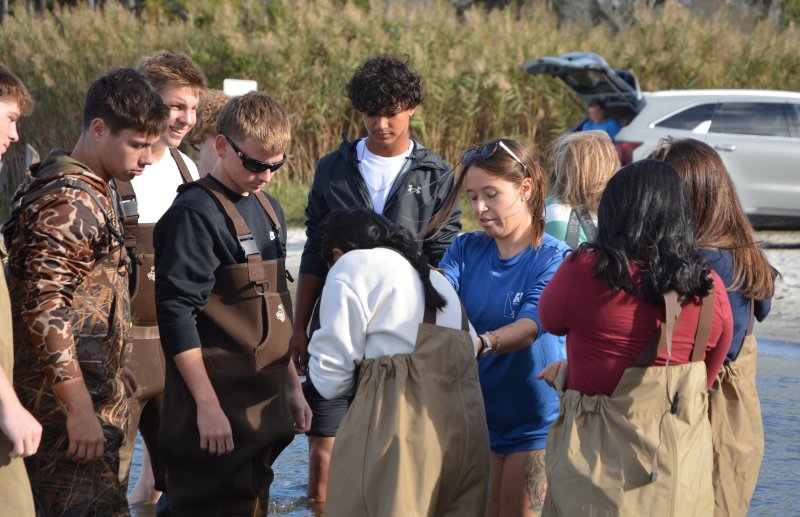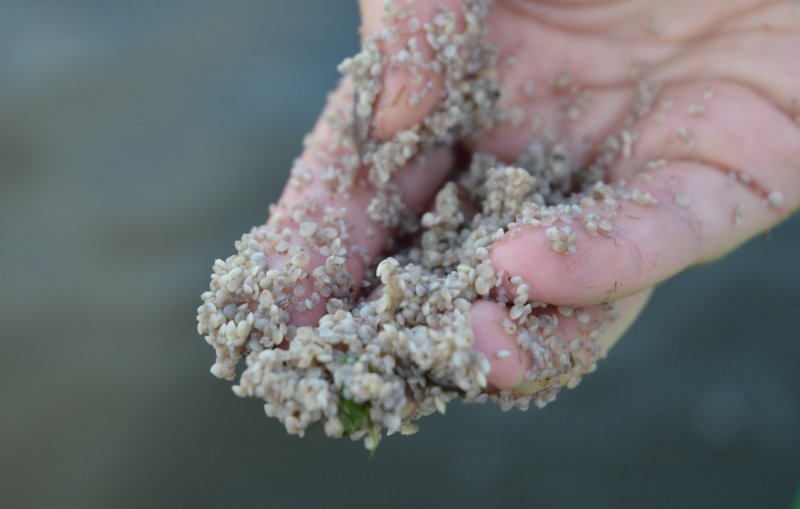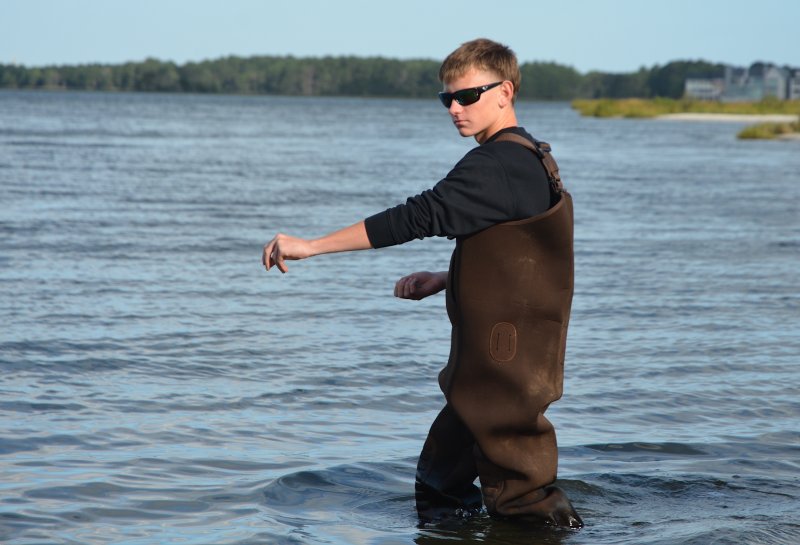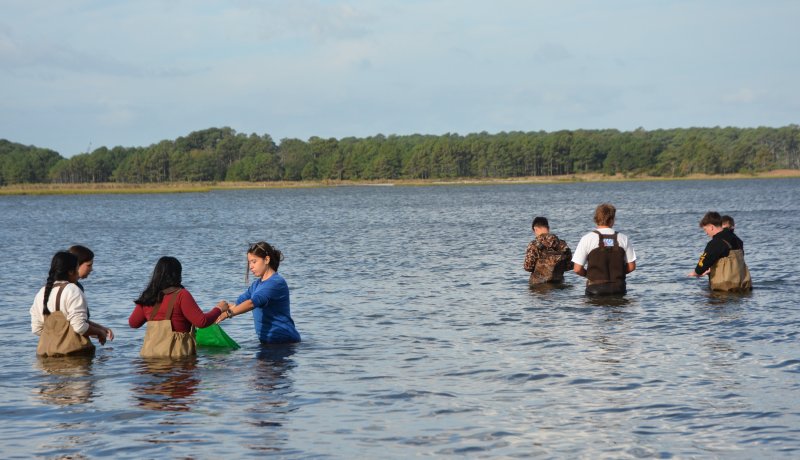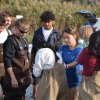Clams grown in Lewes now living in Little Assawoman Bay
Years in the making, clams from the University of Delaware shellfish hatchery in Lewes have been released into the Inland Bays.
The seeding took place Oct. 1 in Little Assawoman Bay off Route 1 just north of Fenwick Island. Alyssa Campbell, Delaware Sea Grant’s Fisheries and Aquaculture Laboratory coordinator, brought about 250,000 clams with her, each one not much larger than a few grains of sand.
“Sprinkle them like seeds,” said Campbell, while holding thousands in the palm of her hand.
Ed Hale, assistant professor in the University of Delaware’s School of Marine Science and Policy, said in an ideal world, the clams will be a harvestable size in two to three years.
It’s taken years to get to this point. In an effort to revitalize the environment and the industry, legislation was signed into law in August 2013, creating a commercial shellfish aquaculture industry in the Inland Bays. Leasing activity began in 2017 in Indian River, Rehoboth and Little Assawoman bays. In early 2018, the first aquaculturists put cages in the water.
The Lewes-area hatchery was built in 2022, and there were oysters being spawned a year later. In 2024, the hatchery produced enough oyster seed to provide commercial aquaculturists with some.
This past year, the hatchery turned its attention to spawning clams, and earlier this summer, Mark Casey, owner of Delaware Cultured Seafood in Millsboro, was the first commercial aquaculture farmer to use some of the clam seeds from the Lewes hatchery.
Students from Sussex Central’s agriculture program participated in the recent seeding event. They were urged to get out as far as they felt comfortable – as long as they didn’t flood their chest waders.
Agriculture program teachers Chris Revel and Jason Stoeckel were on hand with the students.
It was great to be able to participate, said Revel.
Stoeckel said the high school has been to the hatchery in Lewes and is looking to replicate a similar operation at the high school. It doesn’t really take up that much space, and it’s amazing what can be produced, he said.
Rick Chamberlain, Delaware Environmental Coalition president, helped organize the event. He said it served multiple purposes – getting the clams in the water helps the environment, and it brought the high school students out into the field. The goal is that it will lead to more jobs and educational opportunities for the kids in the future, he said.
Chris Flood has been working for the Cape Gazette since early 2014. He currently covers Rehoboth Beach and Henlopen Acres, but has also covered Dewey Beach and the state government. He covers environmental stories, business stories and random stories on subjects he finds interesting, and he also writes a column called Choppin’ Wood that runs every other week. He’s a graduate of the University of Maine and the Landing School of Boat Building & Design.











